History
Andrew Johnson Reconstruction Plan
Andrew Johnson's Reconstruction Plan aimed to reintegrate Southern states into the Union after the Civil War. It required former Confederate states to nullify secession, abolish slavery, and repudiate Confederate debts. Johnson's leniency towards former Confederates and lack of protection for freed slaves led to clashes with the Radical Republicans in Congress, ultimately resulting in the passage of the Reconstruction Acts.
Written by Perlego with AI-assistance
Related key terms
10 Key excerpts on "Andrew Johnson Reconstruction Plan"
- eBook - ePub
Liberty and Union
A Constitutional History of the United States, volume 1
- Edgar McManus, Tara Helfman(Authors)
- 2013(Publication Date)
- Routledge(Publisher)
XIReconstructing the Nation“[E]very man, no matter what his race or color; every earthly being who has an immortal soul, has an equal right to justice, honesty, and fair play with every other man; and the law should secure him those rights.”— Thaddeus Stevens, in Congress (1867)Lincoln’s differences with Congress over Reconstruction flared into political warfare after his assassination in April 1865. His successor, Andrew Johnson, lacked the tact and political skill needed to lead the nation during the difficult postwar years. A Tennessee Democrat and opponent of secession, he had stayed in the Senate when his state seceded. Johnson served with distinction as military governor of Tennessee, and he was nominated as Lincoln’s running mate on the National Union Party ticket in 1864. Republicans felt comfortable with a vice president who had urged Tennesseans to abolish slavery “because in the emancipation of slaves we break down an odious and dangerous aristocracy. I think we are freeing more whites than blacks in Tennessee.” So it came as a shock when Johnson issued an amnesty proclamation in May 1865 pardoning former rebels who took an oath of future allegiance to the United States. The only persons excluded from the offer were high-ranking Confederate officials and persons owning more than $20,000 worth of taxable property. But those excluded from the general amnesty could apply to the president for individual pardons which would be considered separately. At the stroke of a pen, Johnson wiped the slate clean for the vast majority of southerners.Johnson’s Plan of ReconstructionJohnson’s plan for restoring civil government in the South accompanied his amnesty proclamation. Provisional governors appointed by the president would enroll the loyal voters in every southern state for the election of a state constitutional convention, and all pardoned rebels would be eligible to vote and participate in the process. The reconstructed state would be readmitted to the Union as soon as the new government repudiated the Confederate debt, abolished slavery as a domestic institution, and ratified the Thirteenth Amendment. When these conditions had been met, full control over internal affairs would be restored to the state along with the right to representation in Congress. His plan called for getting the South back into the Union quickly without sweeping political or social changes. - eBook - ePub
Liberty and Union
A Constitutional History of the United States, concise edition
- Edgar McManus, Tara Helfman(Authors)
- 2014(Publication Date)
- Routledge(Publisher)
XIReconstructing the Nation“[E]very man, no matter what his race or color; every earthly being who has an immortal soul, has an equal right to justice, honesty, and fair play with every other man; and the law should secure him those rights.”—Thaddeus Stevens in Congress (1867)Lincoln’s differences with Congress over Reconstruction flared into political warfare after his assassination in April of 1865. His successor, Andrew Johnson, lacked the tact and political skill needed to lead the nation during the difficult postwar years. A Tennessee Democrat and opponent of secession, he had stayed in the Senate when his state seceded. Johnson served with distinction as military governor of Tennessee, and he was nominated as Lincoln’s running mate on the National Union Party ticket in 1864. Republicans felt comfortable with a vice president who had urged Tennesseans to abolish slavery “because in the emancipation of slaves we break down an odious and dangerous aristocracy. I think we are freeing more whites than blacks in Tennessee.” So it came as a shock when Johnson issued an amnesty proclamation in May of 1865 pardoning former rebels who took an oath of future allegiance to the United States. The only persons excluded from the offer were high-ranking Confederate officials and persons owning more than $20,000 worth of taxable property. But those excluded from the general amnesty could apply to the president for individual pardons that would be considered separately. At the stroke of a pen, Johnson wiped the slate clean for the vast majority of southerners.Johnson’s Plan of Reconstruction
Johnson’s plan for restoring civil government in the South accompanied his amnesty proclamation. Provisional governors appointed by the president would enroll the loyal voters in every southern state for the election of a state constitutional convention, and all pardoned rebels would be eligible to vote and participate in the process. The reconstructed state would be readmitted to the Union as soon as the new government repudiated the Confederate debt, abolished slavery as a domestic institution, and ratified the Thirteenth Amendment. When these conditions had been met, full control over internal affairs would be restored to the state along with the right to representation in Congress. During the next few months Johnson recognized the reconstructed governments established by Lincoln in Louisiana, Tennessee, Arkansas, and Virginia. His plan called for getting the South back into the Union quickly without sweeping political or social changes. - eBook - ePub
- Jeffrey K. Tulis, Nicole Mellow(Authors)
- 2018(Publication Date)
- University of Chicago Press(Publisher)
Reminiscent of Lincoln’s assertion of executive authority at the outset of the Civil War, Johnson enacted his plan while Congress was in recess. Because the war was over, Johnson could easily have chosen to reconvene Congress for the purpose of establishing a jointly negotiated postwar agenda. He chose, instead, to preempt it. This decision to claim executive authority and preempt Congress was seen as a usurpation of power that was different from Lincoln’s, precisely because hostilities between the states were over at the time of Johnson’s action. And while Johnson cast his action as temporary, “the Southern States did not view the action of President Johnson as of a temporary character; on the contrary, it had the appearance of being, and it was treated as being, of a permanent character.” 7 Thus, from the outset, states in the South understood Johnson’s leadership for what it was: an effort to create for the region the political space to reincorporate on its own terms—not on the terms of the victorious North that Johnson was ostensibly leading—and expressly contrary to the conventional wisdom about the terms of war settlements that privilege the victor’s demands. The essence of Johnson’s plan is contained in an Amnesty Proclamation and an accompanying program for the reintegration of North Carolina. Amnesty was to be granted to all who had participated in the rebellion if they took an oath of loyalty to the Union; the exceptions were former civil and military officers of the Confederacy and ex-Confederates who owned more than $20,000 worth of property. With amnesty came the restoration of all confiscated property except former slaves. The North Carolina Proclamation, subsequently extended to all other unreconstructed states, allowed loyal citizens (that is, those granted amnesty) who had been eligible to vote before the war to elect delegates to a convention at which a new state government would be formed and representatives to Congress chosen - eBook - ePub
Unto a Good Land
A History of the American People, Volume 2: From 1865
- David Edwin Harrell, Edwin S. Gaustad, John B. Boles, Sally Foreman Griffith(Authors)
- 2005(Publication Date)
- Eerdmans(Publisher)
Within a month of being sworn in as president, Johnson announced his own plan for Reconstruction, and in principle stuck to that course over the next three years. Johnson believed that the war had been fought to save the Union and end slavery, not to ensure blacks’ equality before the law. Slavery was dead, so that, to Johnson’s mind, the main goal of Reconstruction was restoring loyalty to the Union. He also thought that revenge served no purpose once the war was over. Rebuilding the nation should take precedence over all considerations, he argued, and a speedy “restoration” of government in the former Confederate states would achieve that end. Significantly, in describing the readmission process, Johnson preferred the term “restoration” rather than the implicitly more sweeping term “Reconstruction.” He also viewed the restoration process as primarily an executive responsibility—thus his decision not to call Congress into special session. Most important, Johnson was a strict constructionist. The former tailor gave the Constitution “a snug fit” in arguing for limited government and rejecting the Radical Republicans’ broad claims of federal authority to extend protection to the freedmen and remake the South.Thaddeus Stevens A veteran abolitionist, Stevens became the leader of the Radical Republicans in the House of Representatives and the advocate of remaking the conquered South into a yeoman society. He was also one of the relatively few Northern politicians to have a genuine sense of social justice toward African Americans.Insisting that he was continuing Lincoln’s plan, Johnson issued two proclamations in May. The first required that white southerners would have to take loyalty oaths to regain their civil and political rights and their property, except slaves. His plan followed Lincoln’s in excluding various categories of ex-Confederate civil and military officials from the general pardon; to those, Johnson added all ex-Confederates with taxable property worth $20,000 or more, hoping thereby to give the “humble men” of the South control of the new governments. Those excluded from the general pardon would have to apply individually to the president for special pardons. The second proclamation outlined the terms of readmission. A provisional governor in each state, appointed by the president, was charged with calling a convention to amend the state’s antebellum constitution to ensure republican government and provide for regular elections. Privately, Johnson later urged state conventions to repudiate secession and any Confederate debts and to ratify the Thirteenth Amendment, but initially he did not insist on those terms as a condition of readmission. Once states had complied with his terms, Johnson would recognize their governments and “restoration” would be complete. He also accepted the governments organized under Lincoln’s “Ten Percent Plan” as already having completed the process of readmission. - eBook - ePub
Unto a Good Land
A History of the American People, Volume 1: To 1900
- David Edwin Harrell, Edwin S. Gaustad, John B. Boles, Sally Foreman Griffith(Authors)
- 2005(Publication Date)
- Eerdmans(Publisher)
Within a month of being sworn in as president, Johnson announced his own plan for Reconstruction, and in principle stuck to that course over the next three years. Johnson believed that the war had been fought to save the Union and end slavery, not to ensure blacks’ equality before the law. Slavery was dead, so that, to Johnson’s mind, the main goal of Reconstruction was restoring loyalty to the Union. He also thought that revenge served no purpose once the war was over. Rebuilding the nation should take precedence over all considerations, he argued, and a speedy “restoration” of government in the former Confederate states would achieve that end. Significantly, in describing the readmission process, Johnson preferred the term “restoration” rather than the implicitly more sweeping term “Reconstruction.” He also viewed the restoration process as primarily an executive responsibility — thus his decision not to call Congress into special session. Most important, Johnson was a strict constructionist. The former tailor gave the Constitution “a snug fit” in arguing for limited government and rejecting the Radical Republicans’ broad claims of federal authority to extend protection to the freedmen and remake the South.Thaddeus Stevens A veteran abolitionist, Stevens became the leader of the Radical Republicans in the House of Representatives and the advocate of remaking the conquered South into a yeoman society. He was also one of the relatively few Northern politicians to have a genuine sense of social justice toward African Americans.Insisting that he was continuing Lincoln’s plan, Johnson issued two proclamations in May. The first required that white southerners would have to take loyalty oaths to regain their civil and political rights and their property, except slaves. His plan followed Lincoln’s in excluding various categories of ex-Confederate civil and military officials from the general pardon; to those, Johnson added all ex-Confederates with taxable property worth $20,000 or more, hoping thereby to give the “humble men” of the South control of the new governments. Those excluded from the general pardon would have to apply individually to the president for special pardons. The second proclamation outlined the terms of readmission. A provisional governor in each state, appointed by the president, was charged with calling a convention to amend the state’s antebellum constitution to ensure republican government and provide for regular elections. Privately, Johnson later urged state conventions to repudiate secession and any Confederate debts and to ratify the Thirteenth Amendment, but initially he did not insist on those terms as a condition of readmission. Once states had complied with his terms, Johnson would recognize their governments and “restoration” would be complete. He also accepted the governments organized under Lincoln’s “Ten Percent Plan” as already having completed the process of readmission. - eBook - ePub
A House Divided
The Civil War and Nineteenth-Century America
- Jonathan Wells(Author)
- 2016(Publication Date)
- Routledge(Publisher)
11 Reconstruction Begins Topics Covered in this Chapter:- ■ African Americans and the Freedmen’s Bureau After the War
- ■ Andrew Johnson and Presidential Reconstruction
- ■ Politics and Elections
- ■ Congressional Reconstruction, 1866–1872
- ■ Johnson’s Impeachment
- ■ White Southern Retrenchment
Introduction
The end of the Civil War settled key questions that had been vexing the nation since its inception. Slavery, an American institution since the earliest days of Virginia‘s Jamestown colony, would no longer be permitted. Although the effects of bondage would last for generations, and though the end of slavery did not mean the end of racism or the establishment of racial equality in either the North or the South, the Thirteenth Amendment to the Constitution ensured that slavery could no longer haunt the Republic. Yet the end of the war also meant that four million freedpeople now needed protection, food, shelter, education, and work. Much of Reconstruction, the period between 1865 and 1877, would be devoted to assessing and trying to meet the needs of the newly freed African Americans. The Freedmen‘s Bureau, the American Missionary Association, and thousands of northern “carpetbaggers” (a derisive term southern whites used for northerners who moved to the South) worked hard to provide for the freedpeople. Formerly enslaved men and women also worked tirelessly to take action themselves. Thousands of African Americans across the South joined mutual aid societies, established schools, and formed organizations of all kinds to ease the transition to freedom.But the need was great, and so was white southern resentment at northern interference in their region, although many white southerners saw the end of the war as the chance to remake the South. Thousands of white southerners joined the Republican Party and tried to work toward a New South without slavery; and for a time it appeared that southern Republicans, both white and black, might indeed be able to put the region on a different path, one that was not free of racism or social injustice but perhaps a New South that would move in the direction of a more progressive economy and society. It was not to be. Just as congressional Republicans determined to remake the South, so too did white southern political leaders dig in their heels to keep the region under white control. So while the war ended long-standing debates about the legitimacy of slavery, profound questions and issues remained: What role would the millions of former slaves play in a reconstructed Union? Would blacks and whites be able to live and work peacefully in the same nation? How much would racism undermine the progress of freedpeople? Would the former slaves be able to vote and enjoy the full civil rights of white citizens? - eBook - ePub
Building the American Republic, Volume 1
A Narrative History to 1877
- Harry L. Watson(Author)
- 2018(Publication Date)
- University of Chicago Press(Publisher)
Enraged by northern victory and the prospect of black suffrage, the popular stage actor and southern sympathizer John Wilkes Booth took his revenge on April 14, 1865, with a shot that killed Abraham Lincoln and gave the presidency to Vice President Andrew Johnson of Tennessee. Like Lincoln, the new president assumed that reconstructing the Union was a military and executive task that belonged to him. He did not call a special session of Congress to deal with the sudden challenges of peace but attempted to govern the occupied states by presidential decree. The period when Johnson controlled reunion policy is known as Presidential Reconstruction.The Tennessee Unionist
Much like Abraham Lincoln, Andrew Johnson had grown up in severe poverty, serving as a tailor’s apprentice in North Carolina before escaping to freedom in the hills of eastern Tennessee. He did not learn to read until he reached adulthood, yet he rose through minor political offices until he reached the House of Representatives, the governorship, and finally the US Senate. A lifelong Democrat, Johnson proudly represented the nonslaveholding yeomen of the upland South and denounced the region’s elite as antirepublican aristocrats. The only southern senator who did not resign his seat when his state seceded, Johnson remained fiercely loyal to the Union and joined Lincoln on the National Union Party ticket in 1864 in a show of trans-sectional and bipartisan solidarity. When Lincoln’s tragic death suddenly lifted him to the presidency, however, Andrew Johnson revealed that he sadly lacked the tact, flexibility, and wisdom that so distinguished his predecessor.Once in office, Andrew Johnson was torn by conflicting feelings. Acutely sensitive to his own humble origins, he burned with resentment of planter aristocrats and longed to call them to account. “Treason must be made odious, and traitors must be punished and impoverished,” he swore repeatedly, highly gratifying Radical Republicans who longed to remake the South. But Johnson himself was not even a Republican, much a less a radical one, and he had no sympathy for Radical Republican notions of racial equality. At heart, Andrew Johnson remained devoted to the principles of President Andrew Jackson, his fellow Tennessean who had made states’ rights, limited government, and white man’s democracy cornerstones of the early Democratic Party. Since his best chances for election as president in his own right lay with the Democrats rather than Republicans, he soon realized that his own Reconstruction policy should emphasize forgiveness rather than punishment of the secessionists, a speedy restoration of the southern state governments, and reliance on states’ rights to decide the fate of the freed people. - eBook - ePub
- Eric Foner(Author)
- 2010(Publication Date)
- HarperCollins e-books(Publisher)
Throughout his Presidency, Johnson held the view that slaves had joined with their owners to oppress nonslaveholding whites. “The colored man and his master combined kept (the poor white] in slavery,” he told the black delegation, “by depriving him of a fair participation in the labor and productions of the rich land of the country.” The result of black enfranchisement would therefore be an alliance of blacks and planters, restoring the Slave Power’s hegemony. As Johnson put it, “the negro will vote with the late master, whom he does not hate, rather than with the non-slaveholding white, whom he does hate.”The definitive announcement of Johnson’s plan of Reconstruction came in two proclamations issued on May 29, 1865. The first conferred amnesty and pardon, including restoration of all property rights except for slaves, upon former Confederates who pledged loyalty to the Union and support for emancipation. Fourteen classes of Southerners, however, most notably major Confederate officials and owners of taxable property valued at more than $20,000, were required to apply individually for Presidential pardons. Simultaneously, Johnson appointed William W. Holden provisional governor of North Carolina, instructing him to call a convention to amend the state’s prewar constitution so as to create a “republican form of government.” Persons who had not been pardoned under the terms of the first proclamation were excluded from voting for delegates, but otherwise, voter qualifications in effect immediately before secession (when the franchise, of course, was limited to whites) would apply. Similar proclamations for other Southern states soon followed.The May proclamations reflected Johnson’s determination to overturn the political and economic hegemony of the slaveocracy and assure the ascendancy of Unionist yeomen. Indeed, while Johnson claimed that his Reconstruction policy continued Lincoln’s, in crucial respects it was very much his own. On the one hand, Lincoln, at the end of his life, favored a limited suffrage for Southern blacks, on the other, he had never suggested exemptions to Presidential amnesty as sweeping as those contained in Johnson’s proclamation. The $20,000 clause, excluding the Confederacy’s economic elite from a voice in Reconstruction, gave Johnson’s proclamations an aura of sternness quite unlike any of Lincoln’s Reconstruction statements. Many in May 1865 believed Johnson intended the clause to “keep these people out in the cold,” enabling yeomen to shape Reconstruction. Others, however, believed he planned to use individual pardons to force the “aristocracy” to endorse his terms of Reconstruction. The latter course had its attractions, especially since it would contribute to Johnson’s own reelection, a consideration that could not have been far from the mind of so intensely ambitious a man. Were Presidential Reconstruction successful, Johnson had it in his grasp to create an unassailable political coalition capable of determining the contours of American politics for a generation or more. - Edward O. Frantz, Edward O. Frantz(Authors)
- 2014(Publication Date)
- Wiley-Blackwell(Publisher)
Johnson’s accession to the presidency was only partially accidental. An assassin’s bullet may have catalyzed the tragic transition in April 1865 but the decision to nominate the East Tennessee Democrat as vice president and successor to Lincoln was based on Johnson’s heroic defense of the Union as United States Senator and Military Governor. It was during the wartime and pre-war months and years that Johnson’s basic vision of American political culture became manifest. Most political observers, both in Tennessee and the nation as a whole, were well aware of the former tailor’s Jacksonian distrust of congressional authority, support for an expanded white man’s democracy, and strict constructionist view of the Constitution. During the war, Johnson’s embrace of emancipation as a necessary wartime goal – a position that put him at odds with many other conservative Southern Unionists – led contemporaries to believe that he had adjusted his old Jacksonian vision of American society to the revolutionary times at hand. But his conversion from pro-slavery ideologue to emancipator – a “Moses” as he clumsily portrayed himself to joyous freedmen and women at one point – proved chimerical in the end. Beyond simple emancipation, Andrew Johnson refused to recalibrate his time-worn views on race, the strictures of the Constitution, or the nature of democracy to the reality of post-Civil War conditions in the South. As historian Eric Foner remarks, the Civil War may have revealed Abraham Lincoln’s propensity to grow with the times, but Johnson, by contrast, “seem[ed] to shrink … in the face of crisis” (Foner, 2010: xxi).Naturally, historiographic assessments of President Johnson hinge upon analyses of the larger process of Reconstruction. In fact, few subjects in American history reveal the contemporary biases of historians who study them more than Reconstruction. Johnson’s controversial stewardship of Reconstruction reflected deeper social and ideological visions of race, the Constitution, and democracy. Consequently, historians of Johnson’s presidency have been as attuned to these elemental ideas as they have been to his actual leadership during the Reconstruction era. What exactly did Andrew Johnson think about race? More importantly, how did his personal ideology affect his leadership of Reconstruction? What did Johnson’s longtime profession of Jacksonian Democracy mean for his vision of a “restored” South? And how did Johnson actually apply his oft-stated reverence for strict constitutionalism to the historically unprecedented task of reconstructing the Union? On each of these questions historians have offered passionate and diverse arguments. But to capture the twists and turns in the historiography of Andrew Johnson, one must also look into the contemporary historical contexts within which historians of the twentieth and twenty-first century operated.- Prof. J. G. Randall, Prof. David Donald(Authors)
- 2016(Publication Date)
- Golden Springs Publishing(Publisher)
Such were the main steps by which the states put the President’s plan into operation. It was a program that did not disfranchise the ex-Confederates. The fundamental principle was that the new governments were based not upon a denial of political rights because of past conduct, but upon a policy which recognized a return to Federal allegiance as a sufficient prerequisite to political enfranchisement. That the American system should return to its normal functioning was the President’s purpose. The process involved direct personal cooperation between the President and the leaders of state reorganization in the South. Southern delegations conferred with Johnson in person, acquainting him with local conditions, presenting unforeseen problems, and receiving his direct pledges of reconciliation.7On the question of Southern readiness for loyal participation in the Union there was a conflict of evidence. After a tour of the South in November-December, 1865, General Grant, who, according to his own testimony, had never been an abolitionist, nor even “antislavery,” reported that “the mass of thinking men of the South accept the present situation of affairs in good faith.” His observations led him to the conclusion “that the citizens of the Southern States are anxious to return to self-government within the Union as soon as possible.” He regretted that there could not be a greater “commingling...between the citizens of the two sections, and particularly of those intrusted with the lawmaking power.”{1407} Benjamin C. Truman, a newspaper correspondent who made a report to the President on conditions in the South, emphatically denied the charge that Northern men in the South were being persecuted. “For some unknown cause [he wrote] a large number of persons are engaged in writing and circulating falsehoods. For some unpatriotic purpose or other, reports of an incendiary character concerning the southern people are transmitted north.” Referring to conditions early in 1866, Truman declared his belief that “the south—the great, substantial, and prevailing element—is more loyal now than it was at the end of the war—more loyal today than yesterday, and that it will be more loyal tomorrow than today.”{1408}
Index pages curate the most relevant extracts from our library of academic textbooks. They’ve been created using an in-house natural language model (NLM), each adding context and meaning to key research topics.

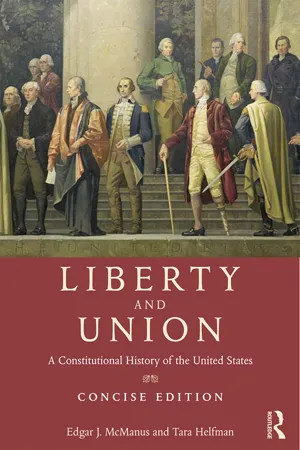



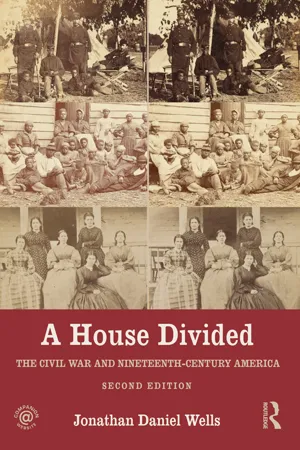
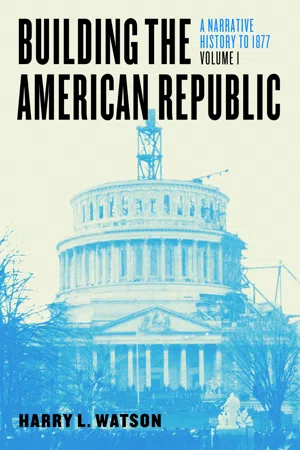
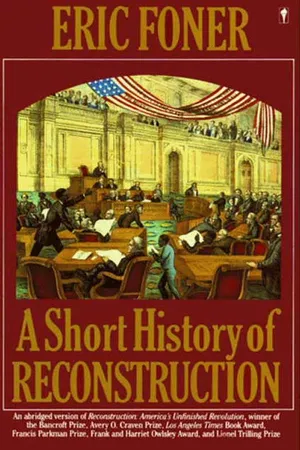
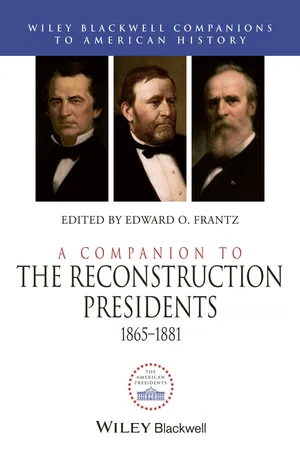
![The Civil War and Reconstruction [Second Edition]](https://img.perlego.com/book-covers/3020131/9781787200272_300_450.webp)